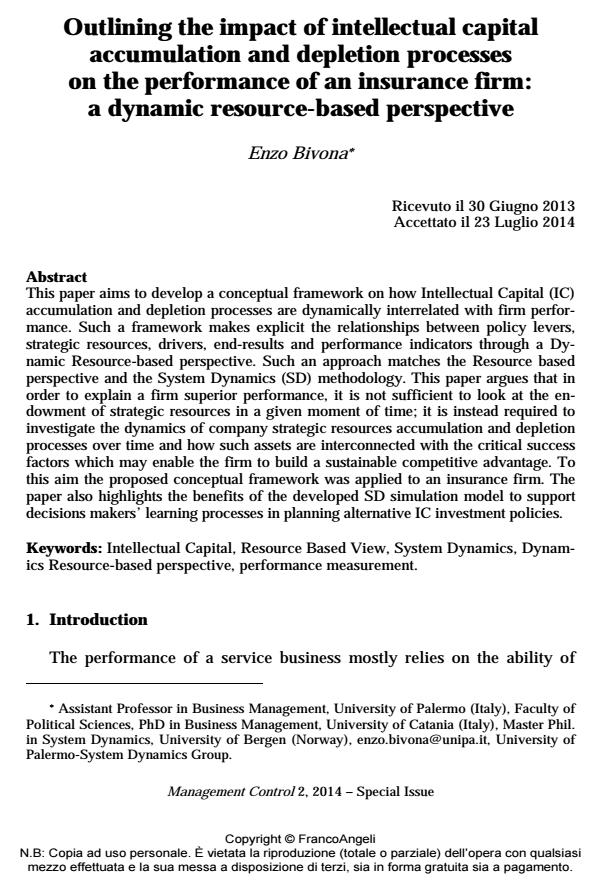Outlining the impact of intellectual capital accumulation and depletion processes on the performance of an insurance firm: a dynamic resource-based perspective
Titolo Rivista MANAGEMENT CONTROL
Autori/Curatori Enzo Bivona
Anno di pubblicazione 2014 Fascicolo 2014/2
Lingua Inglese Numero pagine 23 P. 71-93 Dimensione file 174 KB
DOI 10.3280/MACO2014-002004
Il DOI è il codice a barre della proprietà intellettuale: per saperne di più
clicca qui
Qui sotto puoi vedere in anteprima la prima pagina di questo articolo.
Se questo articolo ti interessa, lo puoi acquistare (e scaricare in formato pdf) seguendo le facili indicazioni per acquistare il download credit. Acquista Download Credits per scaricare questo Articolo in formato PDF

FrancoAngeli è membro della Publishers International Linking Association, Inc (PILA)associazione indipendente e non profit per facilitare (attraverso i servizi tecnologici implementati da CrossRef.org) l’accesso degli studiosi ai contenuti digitali nelle pubblicazioni professionali e scientifiche
This paper aims to develop a conceptual framework on how Intellectual Capital (IC) accumulation and depletion processes are dynamically interrelated with firm performance. Such a framework makes explicit the relationships between policy levers, strategic resources, drivers, end-results and performance indicators through a Dynamic Resource-based perspective. Such an approach matches the Resource based perspective and the System Dynamics (SD) methodology. This paper argues that in order to explain a firm superior performance, it is not sufficient to look at the endowment of strategic resources in a given moment of time; it is instead required to investigate the dynamics of company strategic resources accumulation and depletion processes over time and how such assets are interconnected with the critical success factors which may enable the firm to build a sustainable competitive advantage. To this aim the proposed conceptual framework was applied to an insurance firm. The paper also highlights the benefits of the developed SD simulation model to support decisions makers’ learning processes in planning alternative IC investment policies.
Parole chiave:Intellectual Capital, Resource Based View, System Dynamics, Dynamics Resource-based perspective, performance measurement
- Designing a Multi‐Sided Platform business model assessment framework: a Dynamic Performance Management perspective Enzo Bivona, Federico Cosenz, in Systems Research and Behavioral Science /2021 pp.93
DOI: 10.1002/sres.2665 - Overcoming managers’ myopic decisions in a waste collection company Enzo Bivona, Francesco Ceresia, Giovanni Tumminello, in Journal of Modelling in Management /2019 pp.1023
DOI: 10.1108/JM2-01-2019-0028 - Management, Valuation, and Risk for Human Capital and Human Assets Meir Russ, pp.1 (ISBN:978-1-349-47216-1)
Enzo Bivona, Outlining the impact of intellectual capital accumulation and depletion processes on the performance of an insurance firm: a dynamic resource-based perspective in "MANAGEMENT CONTROL" 2/2014, pp 71-93, DOI: 10.3280/MACO2014-002004